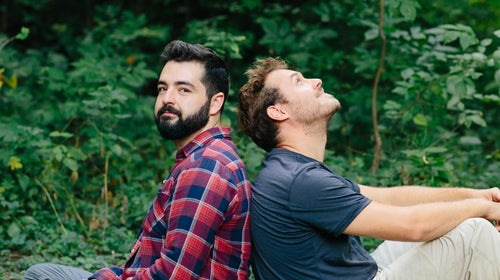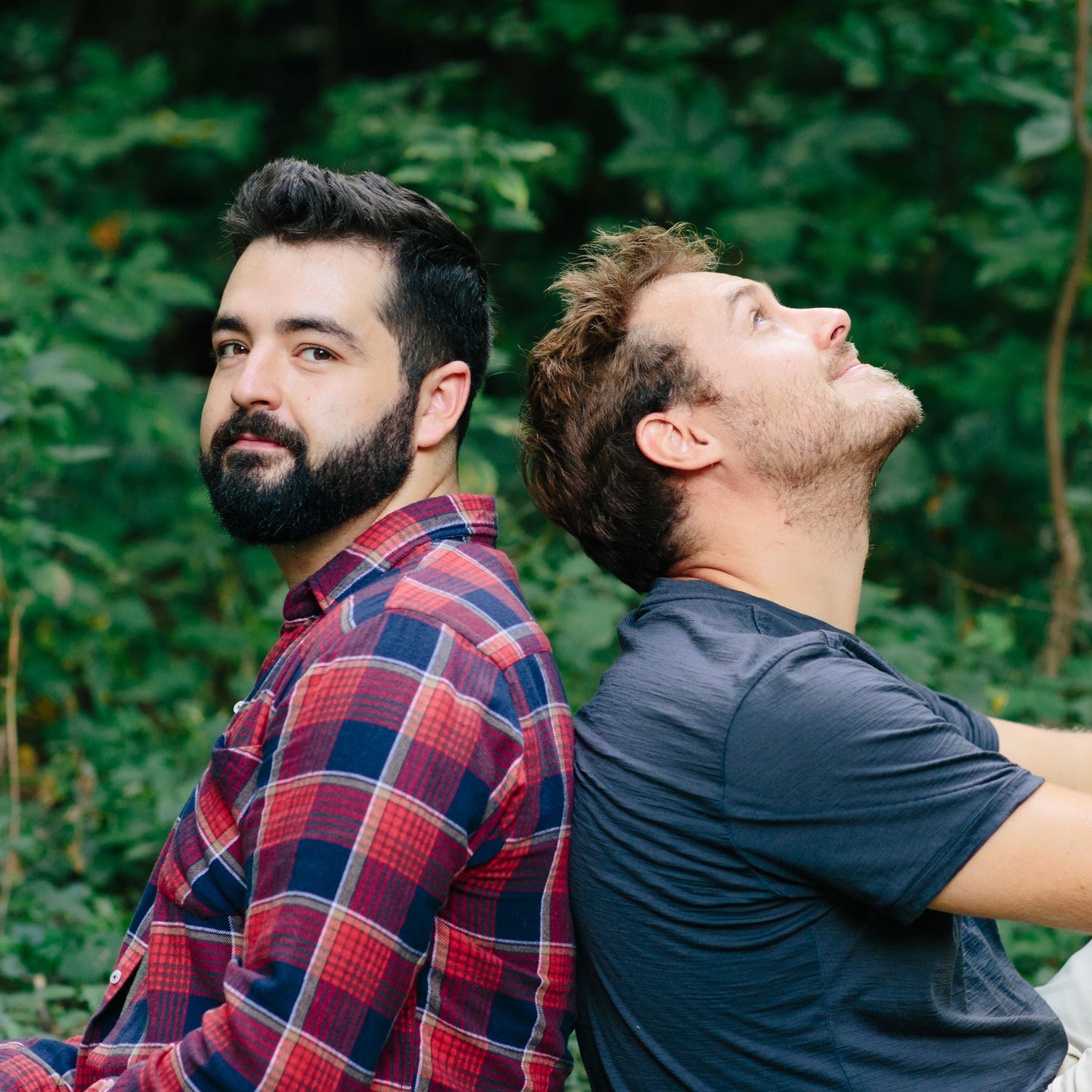In March, when Italy had the worldÔÇÖs highest rate of coronavirus infection and all of us watched with growing disbelief as the death toll grew at a devastating rate, a note of hope floated above the shuttered caf├ęs and empty streets: Italians had thrown open their windows and were singing. They sang songs everyone knew, their voices rising in harmony from individual homes. With╠řeach note, people who were isolated felt , and those who were grieving or afraid felt their moods lift for a while. The gesture has since been replicated in cities around the world.
It was in that spirit that childhood friends Joe Mailander and Justin Lansing, who form the Grammy-winning Okee Dokee Brothers, decided to release their new album two months early. The family-friendly folk duo wanted to help people get through the coronavirus pandemic by singing, and their╠řalbum╠ř╠řbecame available on May 1.╠řIt consists╠řof 27 tracks that are simple, hopeful,╠řand unifying. These are songs in the style of Woody Guthrie or Pete Seeger that you can learn quickly and sing around a campfire, in your living room, or even over a Zoom gathering. To make singalongs easier, the album even includes an illustrated book of lyrics and chords.
ÔÇťWhen we were writing this, obviously before the pandemic, we had in mind that clearly weÔÇÖre living in some pretty divisive times, politically and socially, and that singing could be a way of finding common ground,ÔÇŁ Mailander says. Now that a global pandemic is sowing a different kind of divisiveness, by forcing people to be physically apart from friends and family, nurturing the musical threads that connect us feels even more important.
Listening to an Okee Dokee Brothers album feels like stumbling out of the woods and finding some old friends strumming instruments around a campfire. This isnÔÇÖt an accident. The bandÔÇÖs were written during outdoor expeditionsÔÇöone on a monthlong canoe trip down the Mississippi River, another while horsepacking the Continental Divide, another while hiking the Appalachian Trail, and one during a winter dogsledding trip.╠řThe albums loosely follow these outdoor adventures: there are songs about camping (ÔÇťThousand Star HotelÔÇŁ), running rivers (ÔÇťCan You Canoe?ÔÇŁ), and wandering through the forest (ÔÇťThrough the WoodsÔÇŁ). Each albumÔÇöincluding the new oneÔÇöhas at least one song that makes me cry╠řand another that makes me laugh out loud.
IÔÇÖve been an Okee Dokee Brothers fan since a friend introduced me to them around the time of my daughter JosephineÔÇÖs╠řfirst birthday. Until then, listening to music as a family had involved Jo begging to hear ÔÇťWheels on the BusÔÇŁ 40 times in a row until I lost my mind and put on something like Bon Iver that bored her to literal tears.
As the father of a three-year-old, Mailander can empathize with intergeneration music crises. ÔÇťWe have this tendency as Americans to divide things up and label them,ÔÇŁ he says. In other words, thereÔÇÖs music for kids,╠řand music for adults, and not much recognition that kids and adults often listen to music at the same time. It doesnÔÇÖt have to be that way. With the Okee Dokee Brothers, Jo and I found music we enjoyed equally.
I can say the same about Songs for SinginÔÇÖ, which IÔÇÖve been listening to╠řfor weeks. While the Okee Dokee Brothers usually inspire me to plan an adventure, this album is almost eerily pertinent to this moment in time. In a break from the bandÔÇÖs usual form, Songs for SinginÔÇÖ is about the mini-adventures╠řthat unfold during a typical day at home, like jumping out of bed in the morning or wasting time on a lazy afternoon. It feels fitting, since╠řlots of outdoor families are currently spending an unprecedented amount of time indoors.╠ř
Lansing notes that one of the core ideas for the album was that it would flow ÔÇťfrom morning all the way through the end of the day, capturing the rhythms in between, the ups and downs and the different moods and colors and temperatures of a day,ÔÇŁ Lansing says. It turns out that singing certain songs at certain times can add routine and structure╠řto days at home.╠řThe albumÔÇÖs first track, ÔÇťHope Machine,ÔÇŁ starts with jumping out of bed, putting on some plaid, and opening up to whatever the day brings. ThereÔÇÖs another song, ÔÇťWastinÔÇÖ╠řTime,ÔÇŁ about slow afternoons, and a song of gratitude, ÔÇťThank You,ÔÇŁ to sing at the dayÔÇÖs end. There are weightier songs for more reflective moments╠řand rowdy songs for stomping and dancing and shouting.╠ř
And while Songs for SinginÔÇÖ doesnÔÇÖt reflect a specific place or season like the bandÔÇÖs other albums, itÔÇÖs nonetheless rooted in nature. My favorite track, ÔÇťChurch of the Woods,ÔÇŁ goes like this: ÔÇťMay you lose yourself in the woods/To find yourself again/May you keep on singinÔÇÖ/And dancinÔÇÖ ÔÇÖtil the end/May your dark turn to light/And your death into birth/May your spirit be wild/And may your heaven be on earth.ÔÇŁ
ItÔÇÖs hard to imagine Americans throwing open our windows and singing the national anthem or an operatic chorus, the way the Italians did. (We have, however, proven enthusiastic about ╠řto support our frontline medical workers.) But I can picture neighbors of all ages standing outside with a ukulele or a pot and spoon╠řand belting out a Woody GuthrieÔÇôinspired tune from a safe social distance. In fact, as the weather gets warmer and the pandemic stretches on, I sincerely hope that becomes a thing. We could all use a little more harmony in our lives right now.


